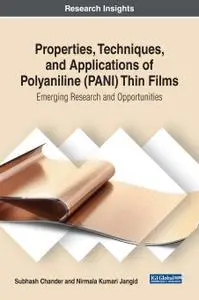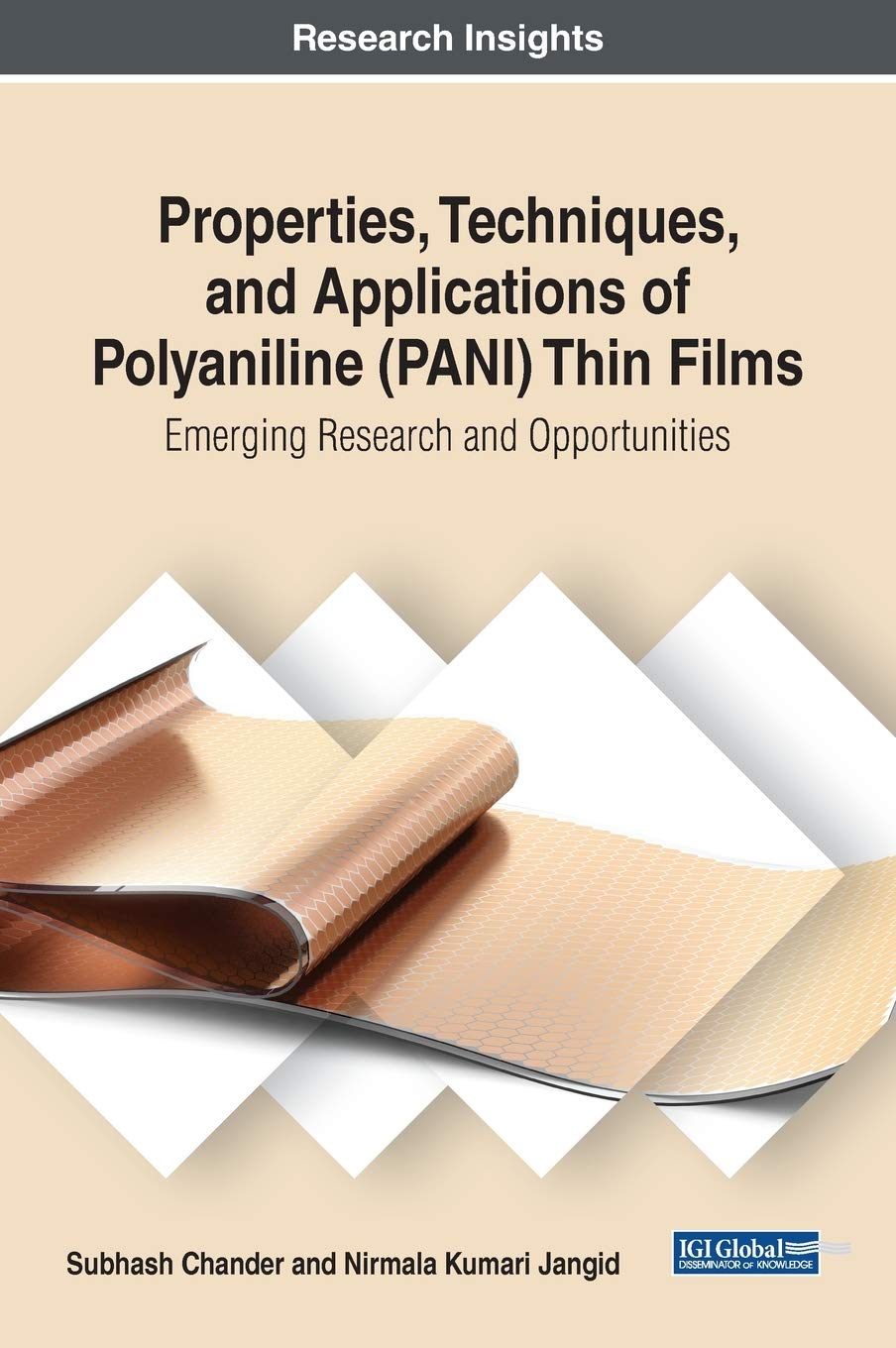Properties, Techniques, and Applications of Polyaniline (PANI) Thin Films
IGI Global | English | 2020 | ISBN-10: 1522598960 | 236 pages | PDF | 8.54 MB
IGI Global | English | 2020 | ISBN-10: 1522598960 | 236 pages | PDF | 8.54 MB
By Subhash Chander (Indian Institute of Science Education and Research, Mohali, India) and Nirmala Kumari Jangid (Banasthali University, Tonk, India)
Polyaniline (PANI) is one of the most common and widely studied conducting polymers due to its excellent electro-chemical and electrical properties and its various applications in areas such as solar cell technologies, drug delivery, organic light emitting diodes (OLEDs), field-effect transistors (FETs), sensors, electro-chromic display, etc. PANI thin films play an important role in energy storage and conversion devices and show great potential in the supercapacitors owing to their high specific capacitance, high flexibility, and low cost. However, no in-depth information about this emerging PANI thin film technology is available.
Properties, Techniques, and Applications of Polyaniline (PANI) Thin Films: Emerging Research and Opportunities is an essential publication that focuses on high-throughput synthesis of PANI thin films and their characterization techniques. The book also covers promising applications of PANI thin films and applications including solar cells. Featuring research on topics such as solar cells, post-synthesis treatments, and physiochemistry, this book is ideally designed for scientists, industry practitioners, engineers, managers, academicians, researchers, and students seeking coverage in the areas of polymeric applications.
Topics Covered
The many academic areas covered in this publication include, but are not limited to:
Applications
Characterization Techniques,
Deposition Techniques,
Future Possibilities,
Physiochemistry,
Polymers,
Post-Synthesis Treatments,
Solar Cells,
Synthesis Techniques,
Theory,



